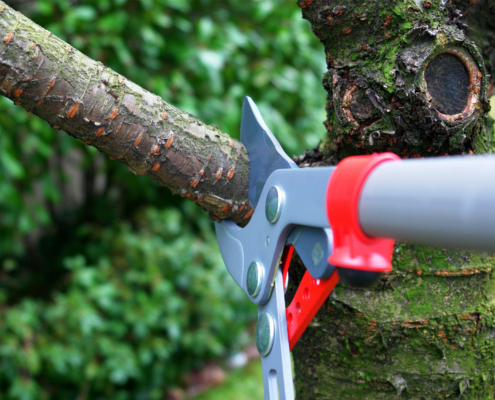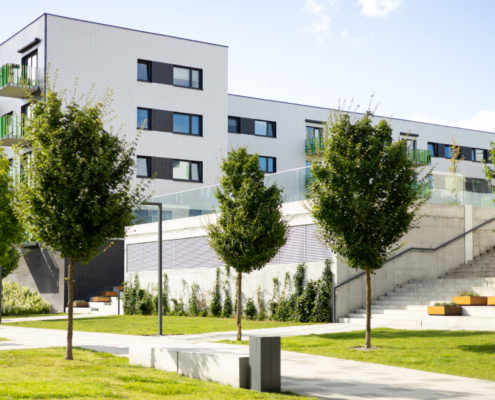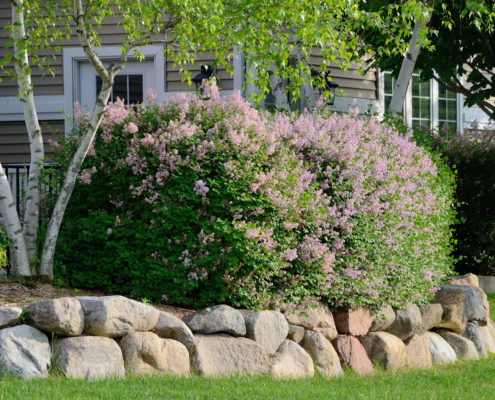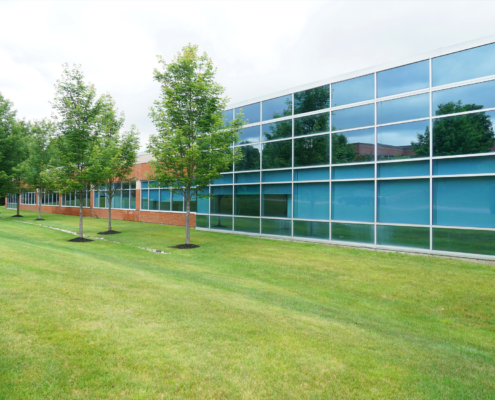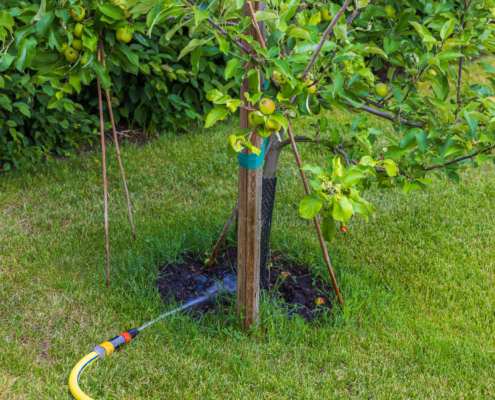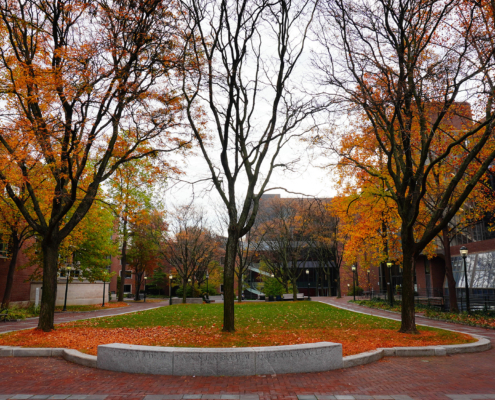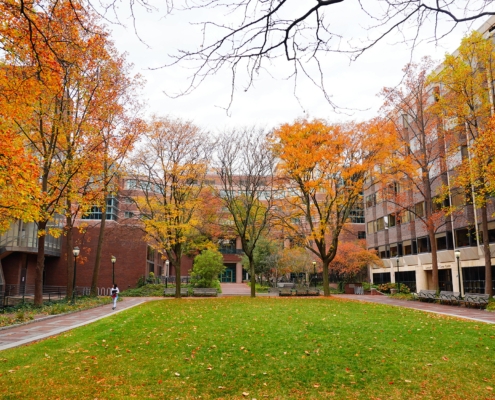When it comes to delivering nutrients to commercial trees, not all fertilization methods are equally as effective. While both surface and deep root techniques aim to improve tree health, the way they function are significantly different—and so are the results they deliver.
Understanding the fundamentals of deep root vs. surface fertilization is the first step to choosing the right approach for your property.
Surface fertilization is the more familiar option. It involves applying granular or liquid nutrients directly to the soil’s surface or turf layer. These nutrients gradually leach into the topsoil and are absorbed by the upper portion of the root system. While this method can support light feeding and turf-adjacent trees, it’s less effective for delivering nutrients deep into the soil.
Deep root fertilization (DRF), on the other hand, uses a soil injection tool to deliver a nutrient-rich solution directly into the tree’s root zone. The goal is to bypass turf and compacted topsoil, reaching the fine, fibrous roots responsible for nutrient uptake. These injections are made in a grid pattern throughout the drip line, ensuring even coverage and targeted support.
Here’s a quick breakdown of how the two methods compare:
- Surface Fertilization:
- Easier to apply with standard landscaping tools
- Suitable for turf-blended areas and general-purpose feeding
- Slower and more shallow absorption
- Greater risk of runoff or loss in compacted soil
- Deep Root Fertilization:
- Requires specialized equipment and training
- Delivers nutrients directly to the root system
- Enhances long-term health and soil conditions
- Better suited for mature trees, stressed landscapes, and high-value properties
The key takeaway? Deep root vs. surface fertilization isn’t just a question of method, it’s a strategic decision based on the condition of the soil, the health of the trees, and the goals for growth or recovery.

